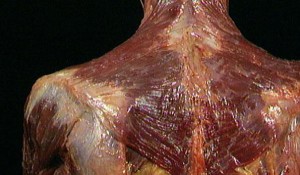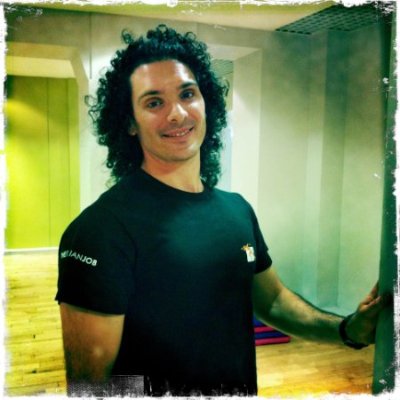Fascia: An Introduction
Fascia is a band or a sheet of fibrous tissue that encompasses the entirety of the body. All muscles, organs and even bones are covered by it (the fascia of the bones is actually called periosteum and is slightly different on a cellular level to the fascia covering the muscles and inner organs). Its ability to stretch and move without restriction allows our body to perform fluid movements in all directions. If we can run, jump, swim, dance and do squats at the gym it is because fascia allows our muscles to flex and bones to move. When the fascia becomes restricted because of trauma and injuries we are impaired in our performance of those movements.
 The fascia not only covers muscles and inner organs. With its 3D spider web structure it also separates, envelops and binds them together making everything inside your body move smoothly and in harmony. It goes into all the layers of the body, from the superficial to inner without interruptions.
The fascia not only covers muscles and inner organs. With its 3D spider web structure it also separates, envelops and binds them together making everything inside your body move smoothly and in harmony. It goes into all the layers of the body, from the superficial to inner without interruptions.
Fascia has two important principles: 1) it is one network in the entire the body and 2) it has an innate tensional integrity [tensegrity] property.
With the first principle I want to highlight that this structure is a continuous throughout the entire body. There are no breaks or divisions when the fascia invests all the muscles and organs of the body. Imagine it like a white-ish blanket that covers you from top, bottom, but also inside.
Some theories suggest that maybe we are not made from 600 muscles but from one muscle divided into 600 pockets made by fascia.
The second principle is related to the property of the fascia itself, the tensegrity. The term tensegrity was first coined by Buckminster Fuller. The term indicates the unique property of the structures of the body to show tension and integrity at the same time. Basically this concept highlights the fact that the body maintains its integrity and balance thanks to the tension of its single parts – holding the body together avoiding to collapse on itself.
What are the consequences of these two important principles?
Firstly, due to fascia being one continuous structure throughout the body, any damage in one part of the body can impair other parts because of this interconnection (dysfunction in the shoulder can impair movements and bring pain in neck and spine but also in elbow, wrist or hand).
Secondly as we said at the top of this article when the fascia gets tensed or damaged by traumas and injuries its tensegrity property is also disrupted. Movements become restricted, difficult to perform and painful. Fascia tensegrity can be restored by therapeutic intervention such as deep tissue, soft tissue, as well as neuromuscular techniques. Osteopathic techniques work great too because they can address fascia dysfunction holistically in the entire body.

